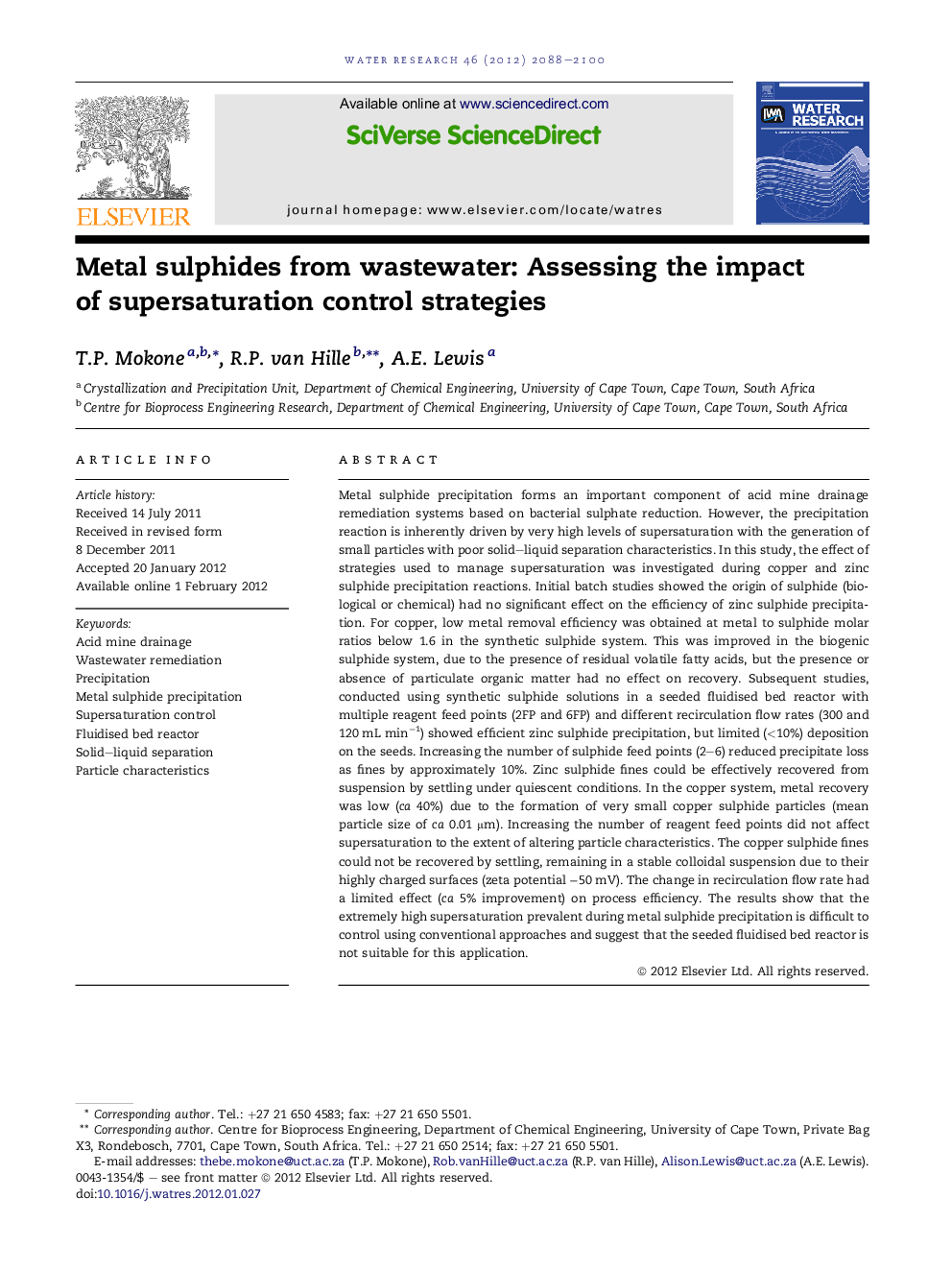| کد مقاله | کد نشریه | سال انتشار | مقاله انگلیسی | نسخه تمام متن |
|---|---|---|---|---|
| 4482912 | 1316873 | 2012 | 13 صفحه PDF | دانلود رایگان |

Metal sulphide precipitation forms an important component of acid mine drainage remediation systems based on bacterial sulphate reduction. However, the precipitation reaction is inherently driven by very high levels of supersaturation with the generation of small particles with poor solid–liquid separation characteristics. In this study, the effect of strategies used to manage supersaturation was investigated during copper and zinc sulphide precipitation reactions. Initial batch studies showed the origin of sulphide (biological or chemical) had no significant effect on the efficiency of zinc sulphide precipitation. For copper, low metal removal efficiency was obtained at metal to sulphide molar ratios below 1.6 in the synthetic sulphide system. This was improved in the biogenic sulphide system, due to the presence of residual volatile fatty acids, but the presence or absence of particulate organic matter had no effect on recovery. Subsequent studies, conducted using synthetic sulphide solutions in a seeded fluidised bed reactor with multiple reagent feed points (2FP and 6FP) and different recirculation flow rates (300 and 120 mL min−1) showed efficient zinc sulphide precipitation, but limited (<10%) deposition on the seeds. Increasing the number of sulphide feed points (2–6) reduced precipitate loss as fines by approximately 10%. Zinc sulphide fines could be effectively recovered from suspension by settling under quiescent conditions. In the copper system, metal recovery was low (ca 40%) due to the formation of very small copper sulphide particles (mean particle size of ca 0.01 μm). Increasing the number of reagent feed points did not affect supersaturation to the extent of altering particle characteristics. The copper sulphide fines could not be recovered by settling, remaining in a stable colloidal suspension due to their highly charged surfaces (zeta potential −50 mV). The change in recirculation flow rate had a limited effect (ca 5% improvement) on process efficiency. The results show that the extremely high supersaturation prevalent during metal sulphide precipitation is difficult to control using conventional approaches and suggest that the seeded fluidised bed reactor is not suitable for this application.
Figure optionsDownload high-quality image (211 K)Download as PowerPoint slideHighlights
► Low solubility of metal sulphides makes control of supersaturation difficult.
► Precipitation reactions dominated by primary nucleation resulting in very small particles.
► Origin of sulphide (biological or chemical) has no significant effect on zinc removal.
► Lower proportion of HS− species (pH induced) improved precipitate characteristics.
► Conventional strategies for supersaturation management in FBR not effective for metal sulphides.
Journal: Water Research - Volume 46, Issue 7, 1 May 2012, Pages 2088–2100